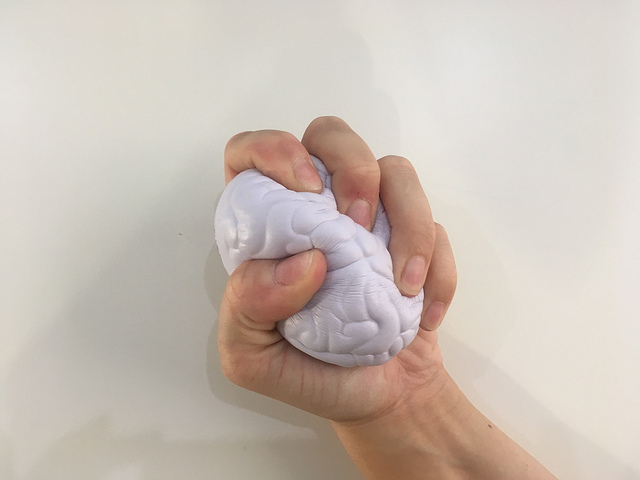
It is 8:56am. Larry has already wasted one of the five minutes he had allotted himself for checking emails. As he scrolls through, deleting happy birthdays from colleagues he seldom sees, his internal clock starts to count down the seconds until the clock hits the hour and he is called to see the first of the patients seated the other side of his door.
Two hundred and two, two hundred and one…
It was nice of them to organise a surprise for him on the ward, even if the cake tasted like the box it came in and one of the two 5-shaped balloons wouldn’t rise to the level of its partner. This half a landmark was not a birthday Larry had particularly wanted to celebrate, much less advertise.
One hundred and sixty, one hundred and sixty-nine.
In between the half well-wishing and half-apologetic emails from colleagues who were otherwise engaged at the time of the ‘party’, are three sets of test results, two referral letters and one FINAL FINAL reminder to register for September’s conference.
Ten more years of this, thinks Larry. Really?
One hundred and two, one hundred and one…

Ten more years of this, thinks Larry. Really?
Several of our fellow contributors to Mental Elf have highlighted research measuring ‘burnout’ among people in various types of workplaces. Burnout happens when someone loses their enthusiasm for their work role and becomes cynical and unable to invest emotionally in work. Burnout can be observed among teachers, social workers, across health professions and can be a risk factor for poor mental health over the longer term. What is more, treatment for burnout is still at an early stage of development.
Burnout can also be an issue for staff retention (Tziner, Rabenu, Radomski, & Belkin, 2015). The years around the traditional retirement age can bring unique challenges, including caring responsibilities for elderly relatives and planning for long-term financial security.
With long and demanding hours, health care workers are a group whose risk of burnout is of particular concern. One group discussed on this site by Christopher Pell in this context is consultant physicians. Findings from a study by Shanafelt and colleagues (2016) found that:
- A majority of consultants surveyed were above the ‘burned out’ threshold on emotional exhaustion and/or depersonalisation;
- Stressors such as ‘e-health’ operation systems (which were difficult to use) increased risk of burnout to physicians.
Physicians’ overall wellbeing, and in particular stress and burnout, certainly affects the individual concerned and their families. It might also affect the quality of individual performance (Dewa, Loong, Bonato, Thanh, & Jacobs, 2014) as well as the overall performance of health care systems (Wallace, Lemaire, & Ghali, 2009).
Furthermore, a systematic review by West and colleagues showed that, while doctors’ burnout is responsive to intervention, more effective interventions tended to be those which demanded structural changes to work patterns, which requires a high level of organisational commitment.
Doctors are recognised to be reluctant retirees for a variety of reasons (see Silver & Williams., 2018). It is in the interests of healthcare providers to carefully monitor and accurately predict rates of retirement such that resourcing can be predicted and key training roles can be fulfilled.
A recent study of burnout among consultants, published by Khan, Teoh, Islam and Hassard in BMJ Open (2018), highlights the links between being burned out and planning to retire early. In particular, the authors claim that its contribution is in showing a mediating relationship, whereby the effects of work demands on retirement intention operate via the mechanism of increasing the components of burnout.

With long and demanding hours, health care workers are a group whose risk of burnout is of particular concern.
Methods
This was a cross-sectional design, employing an online survey questionnaire for maximum reach to potential participants across Wales, Scotland and England in 2015. The final sample of 593 had approximately equal representation from the three regions. Most participants were male (63.1%), between 41–50 years (45.5%) and 51–60 years (31%).
Surveyed consultants were asked for information on personal characteristics, their specialty, tenure as consultant, work-related pressure, job autonomy, burnout, early retirement intention and anxiety and depressive symptoms. Researchers analysed data from a survey of burnout and associated factors among the consultants surveyed. The Job Demand-Resources measure (Bakkar 2014) captured work pressures (job demands) in the context of job autonomy (resources) to support consultants to manage the challenges of their job.
The Maslach Burnout Inventory was used to measure Emotional Exhaustion and Depersonalisation. These were then converted into ‘high’ and ‘low’ score ranges, (though some people were allowed to fall into neither category, so implicitly there is a ‘medium’ range also). Depression and anxiety symptoms were measured by the State Trait Personality Inventory with high scores representing more frequent experience of anxiety and depressive symptoms. Although this is not a diagnostic tool, scores higher than the 75th percentile of national averages for depression and anxiety, were classified as having high depression and anxiety levels. In addition to these measures, a one item question measured early retirement planning on a scale from 1 to 6, asking “do you think you will be doing this job when you are 60 years old?”. Anchored from 0 (“I would not even want to be”) to 6 ‘yes’.
Analysis
Regression analysis was used to identify the influence of the psychosocial characteristics of work, burnout and demand-control dimensions, on symptoms of anxiety and depression, and on intentions to retire early.
Further analysis examined whether burnout played a mediating role, accounting for the association between workplace demands and control and outcome measures.

Do you think you will be doing this job when you are 60 years old?
Results
Forty percent were categorised as having reported a high frequency of anxiety symptoms, and over a third of the sample a high degree of depressive symptoms. Overall burnout indices were less often in the ‘high’ range than in the study by Shanafelt and colleagues. High Emotional Exhaustion was more prevalent than high Depersonalisation: almost forty percent (38.7%) of participants reported a high level of emotional exhaustion and just over a fifth (20.74%) reported high depersonalisation. Higher levels of anxiety symptoms were reported by older consultants, those with less experience and male consultants. Also, for depressive symptoms, being older and having less experience was also associated with more frequent depressive symptoms. Intention to seek early retirement was not associated with any of the sociodemographic variables measured.
Effects of the psychosocial characteristics of work on anxiety and depression
Burnout dimensions
Greater emotional exhaustion and depersonalisation were each associated with having greater anxiety and depressive symptoms.
Demand/control dimensions
Lower job autonomy was associated with higher scores on anxiety and depression scales. However, emotional exhaustion was found to mediate the relationship between job autonomy and depression and anxiety symptoms. In other words, lower job autonomy only affects these outcomes indirectly, through raising levels of burnout. (A further mediation test showed that depersonalisation partially mediated the relationship between job autonomy and anxiety and depressive symptoms.)
Work pressure was not a significant predictor of anxiety or depression among the consultants surveyed.
Effects of the psychosocial characteristics of work on retirement intentions
Burnout dimensions
Consultants experiencing greater emotional exhaustion were slightly more likely to be intent on retiring early. The association between depersonalisation and early retirement intention was not found to be significant.
Demand/control dimensions
Lower job autonomy was associated with intentions for early retirement. As with anxiety and depression, emotional exhaustion was found to mediate the relationship between job autonomy and early retirement intention. Depersonalisation did not mediate at all the relationship between job autonomy and intentions for early retirement.
Work pressure had no direct effect on early retirement intention.

This study suggests that job autonomy is associated with a number of self-reported psychological morbidity symptoms and early retirement intentions in a sample of NHS consultants.
Conclusions
There is growing interest and recognition of the role of context when exploring the ‘hazard-harm’ relationship for workers across society. This paper provides useful insight into the world of NHS consultants and their wellbeing in the workplace. In particular, it highlights the psychosocial aspects of their work which impact both wellbeing and intentions around retirement.
According to these findings, the most relevant of the burnout domains in relation to early retirement and depression and anxiety symptoms, is emotional exhaustion. Of the Demand/Control dimensions, job autonomy was a more influential factor than work pressure suggesting that it is important for consultants having a measure of autonomy in deciding how they discharge their duties. However, given that the effects of job autonomy appear to operate via increasing emotional exhaustion, careful planning is required to translate these findings into policy and practice.
This is an under-researched population, particularly within a framework of ageing. A good companion to this article is another 2018 study by Silver and Williams. Through content analysis and focus group methodology, this study dives more deeply into the specific cognitions and norms around retirement in medical practice. An additional resource is the paper by McFadden, Mallett and Leiter (2018) showing how organisational domains can be measured to examine the role of factors such as reward, control and individual resilience in the context of workload, values, community (relationships at work) and fairness, to mediate the pathway to emotional exhaustion, depersonalisation and personal accomplishment. Further research should explore the role of early retirement intentions in this context for clearer understanding of factors within the reach of organisational policy to positively impact on work related demands and avoid negative outcomes for employees.

Interventions need to focus on enhancing working conditions and addressing burnout before more severe symptoms of psychological morbidity are reported.
Strengths and limitations
- The study uses robust sampling and appears to be representative of consultants. However, the authors point out that the response rate cannot be calculated because of the e-mail based recruitment procedure
- The analytical strategy is clear and addresses an important series of questions
- This is a cross-sectional dataset: longitudinal data would be required to make stronger claims of causal relationships
- The tools used to measure anxiety and depression of these consultants are not clinically diagnostic. While they are valuable indicators of wellbeing, it is impossible to deduce whether the risk factors identified would precipitate mental illness at clinical thresholds
- Intention to retire is discussed in composite form and as a health proxy outcome. Cognitions around retirement aren’t discussed extensively.
Implications for practice
To reduce staff turnover and loss of experienced staff, the findings highlight the need to proactively develop workplace interventions aimed at reducing workplace stress for consultants. Furthermore, such interventions are likely to be more effective where they are tailored to people at different stages in the life-course. However, more research is needed. More comparative research could help to inform whether such interventions need to be tailored to professional groups.

This study has implications for NHS policy makers and senior leadership. What are you doing to prevent burnout in the NHS consultants in your organisation?
Conflicts of interest
The authors of this blog are members of the Northern Ireland Public Health Research Network Workplace Wellbeing Group. Please contact NIPHRN or the authors for more information.
Links
Primary paper
Khan, T., Teoh, K.R.H., Islam, S., & Hassard, J. (2018). Psychosocial work characteristics, burnout, psychological morbidity symptoms and early retirement intentions: a cross-sectional study of NHS consultants in the UK. BMJ Open, 8, 1-11.
Other references
Dewa, C.S., Loong, D., Bonato, S., Thanh, N.X., & Jacobs, P. (2014). How does burnout affect physician productivity? A systematic literature review. BMC Health Services Research, 14(325).
McFadden, P. Mallett, J. and Leiter. M (2018) ‘An Extension of the Two Process Model of Burnout: The Role of Resilience, Reward and Community Relationships in Child Protection Social Work’. Stress and Health, 34(1),1–12.
Shanafelt, T.D., Drybye, L.N., Sinsky, C., Hasan, O, Satele, D., Sloan, J., & West, C.P. (2016). Relationship between clerical burden and characteristics of the electronic environment with physician burnout and professional satisfaction. Mayo Clinic Proceedings, 91(7), 836-848.
Silver, M.P., & Williams, S.A. (2018). Reluctance to retire: a qualitative study on work identity, intergenerational conflict and retirement in academic medicine. The Gerontologist, 58(2), 320-330.
Tziner, A., Rabenu, E., Radomski, R., & Belkin, A. (2015). Work stress and turnover intentions among hospital physicians: The mediating role of burnout and work satisfaction. Journal of Work and Organizational Psychology, 31(3), 207-213.
Wallace, J.E., Lemaire, J.B., & Ghail, W.A. (2009). Physician wellness: a missing quality indicator. The Lancet, 374(9702), 1714-1721.
Photo credits
